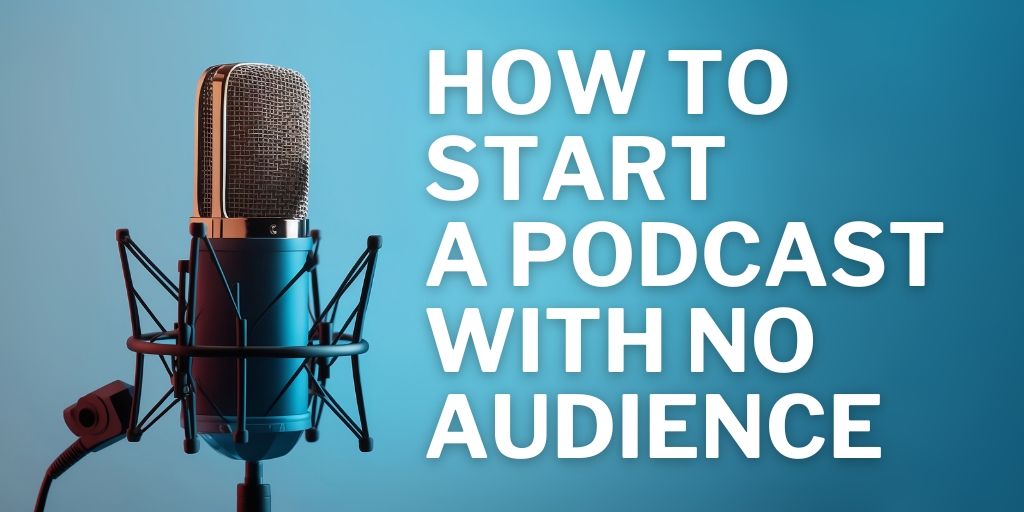Podcasting is a powerful medium, but starting a podcast with no audience can be daunting. However, it’s a journey worth taking. This article covers everything about how you can start a podcast with no audience.
What Is a Podcast?
Podcasts are pre-recorded audio or video files made available on the internet for streaming and downloading. They help creators share their thoughts, experiences, and knowledge with a global audience.
According to a recent statistic, more than 50 million people (approximately) listen to podcasts a month, making it an excellent platform to spread your word to the world.
Benefits of Podcasting
Podcasting has various benefits, such as:
- Build a healthy audience base
- Low-budget idea (you don’t need a Hollywood budget to start a podcast!)
- Show off your creativity
- Various monetization opportunities
- Control over content
- Fun and fulfillment (if you like sharing your passion and connect with others)
Steps to Start a Podcast With No Audience
First, do you need an audience to start a podcast? No. In fact, many successful podcasters started with little to no audience. As you keep publishing high-quality content, you’ll automatically build an audience.
Here’s how you can start a podcast with no audience.
1. Find Your Niche
Identifying your niche is the first step in starting a podcast. It may seem overwhelming, but it isn’t that difficult. Research popular podcast topics and select one you’re passionate about or an expert in. Avoid choosing a niche that’s too saturated, as it’ll be difficult to make your content stand out during the initial stage.
If you’re starting a podcast related to your business, the niche needs to complement it.
2. Set Up Your Podcast
Investing in high-quality recording equipment is necessary to attract and retain the audience. Here are all the tools you need for a podcast.
- High-quality camera (Panasonic HC-X1 4K Ultra HD or Canon XC10 4K)
- High-quality audio equipment (Blue Yeti X or Rode NT1)
- Lighting equipment (Aputure or Godox)
- Video editing software (Adobe Premiere Pro or DaVinci Resolve)
- Powerful computer
- Teleprompter
If you don’t have the budget for these tools, start with a smartphone and an ordinary Lavalier mic — that’s how many podcasters started. Once you’re set, subscribe to a reliable podcast hosting platform like Podbean and Acast to store your podcast and share it with the world. Click here to read a guide on the best podcast hosting platforms.
3. Plan Your Content
Once you buy the equipment, the next step is planning. Here’s how you can plan your podcast episodes.
- Write down the list of topics you want to create.
- Craft a well-structured episode outline.
- Write down the script for the content. Ensure the introduction is compelling to gain the viewer’s interest.
- Create catchy and concise titles to pique the curiosity of potential viewers and make them click your content.
4. Create Compelling Content
Here are the tips to create compelling podcast content.
- Create an appealing podcast cover as it’s the first thing viewers see. Ensure it’s eye-catching and reflects your podcast’s theme.
- Prepare a script to ensure you structure the information correctly and speak in the right tone. Before preparing a script, watch other podcasts on a similar topic to know what to include to make your content stand out.
- It’s normal to feel nervous, especially in the beginning. To overcome the fear, rehearse the script a few times before starting the actual recording.
- Record in a quiet environment to minimize background noise. Play around with microphone placement and use pop filters to enhance audio clarity.
- Remove unnecessary pauses and background noise in the editing software.
5. Build Your Audience
Now that you have published your podcast episodes, it’s time to let the world know you exist. Social media and networking are great ways to build an audience for your podcast.
Publishing posts on platforms like Twitter, Instagram, and Facebook related to your podcasts can help attract an audience. You can publish behind-the-scenes glimpses, share snippets, and engage teasers to generate interest.
The podcasting community is large and supportive, and you can easily find one who wants to collaborate. Reach out to other podcasters in your niche. You can appear on their shows as a guest, and they can appear on yours. This cross-promotion exposes your podcast to new listeners and expands your network within the podcasting community.
6. Monetize Your Podcast
Once you have a decent number of viewers, you can explore monetization options. Sponsorships, affiliate marketing, and listener donations are common ways to generate income. However, remember that content quality needs to be your priority and not promoting products.
Be transparent with your audience about any sponsorships and advertisements. Authenticity builds trust, and a trustworthy relationship with your audience is worth more than advertising revenue.
Conclusion
Starting a podcast with no audience is challenging but can be rewarding. By finding your niche, setting up your podcast, planning your content, creating compelling content, and building your audience, you can create a successful podcast from scratch.
Podcasting is a powerful medium that has a lot of growth opportunities. Combining broadcasting and podcasting gives you the best results. Click here to meet with Ken and discuss broadcasting on his Network TCN (The Courage Network).
Ken D Foster is an author, keynote speaker, and success coach dedicated to helping individuals unlock their full potential. With decades of experience in the entertainment industry, Ken has helped numerous aspiring TV personalities achieve their dreams.

